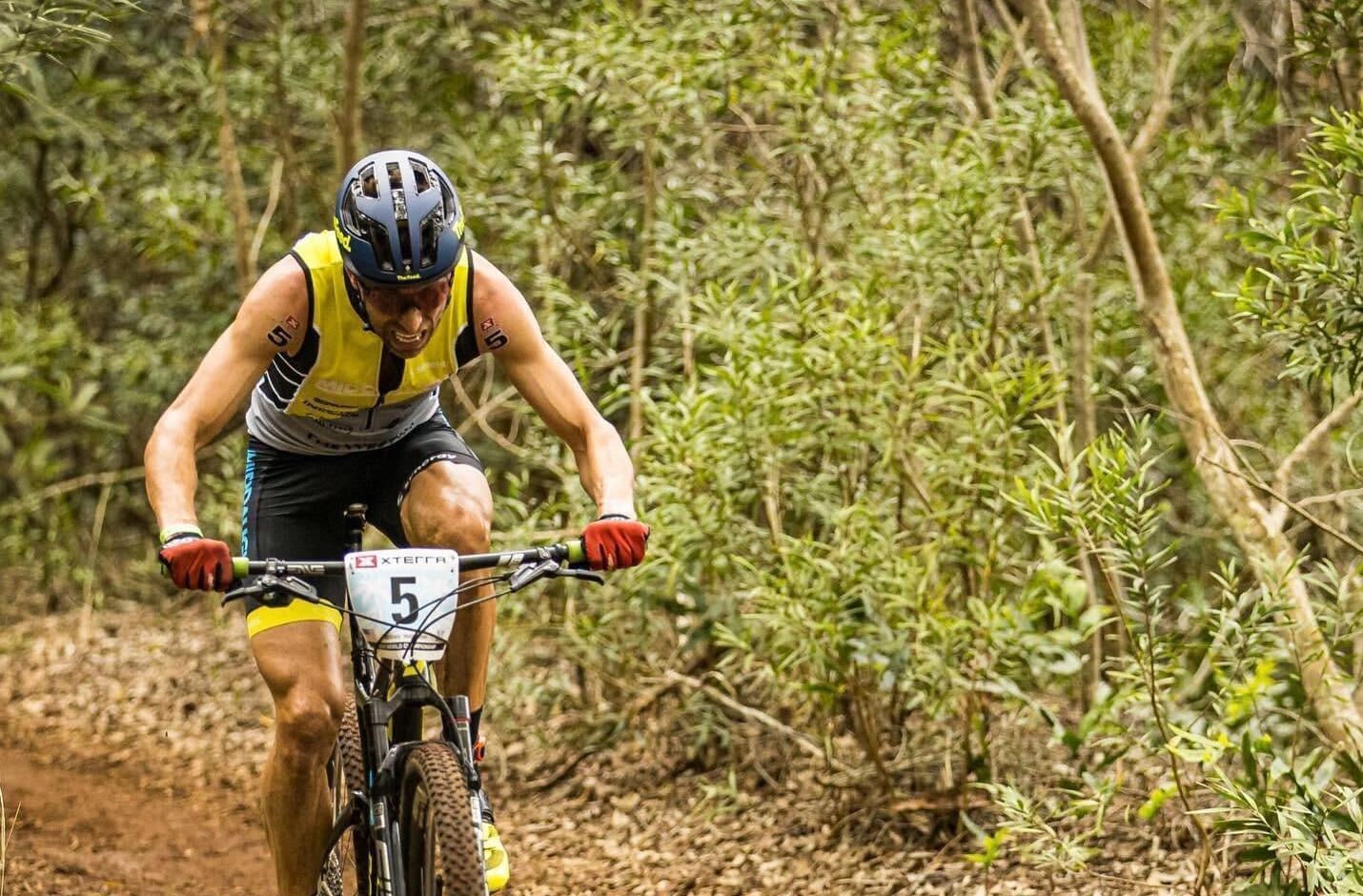
Training for multiple sports can be a tall task – fueling them appropriately even more so. The Feed's HPT member Josiah “Beast Mode” Middaugh wrote a piece for us on how he handles the challenge.
Training for multiple endurance sports simultaneously can be a balancing act. It reminds me of the saying “jack of all trades, master of none.” Unfortunately it is impossible to concurrently train like an elite swimmer, train like an elite cyclist, and train like an elite runner.
At the highest level there is very little transfer between sports and in some cases there can even be interference. However it is important to know the difference between how top performers in each sport approach key sessions, skill development, and intensity distribution.
When I glance at the training plan of a multi-sport athlete compared to a single-sport athlete, the most glaring difference is the number of training sessions in a week. A typical week for an elite triathlete consists of 4 or 5 sessions in each discipline (sometimes more for a limiter sport, less for most age group athletes), so it is very common to have double training sessions each day and occasionally triple.
The entirety of the training week needs to be considered when planning key high intensity sessions and long sessions, which becomes very tricky from a recovery standpoint.
Fueling during and between sessions
I used to say training always looks easier on paper, but I should revise that to say training always looks easier on the App. When juggling multiple training sessions in a day, recovery can be optimized by spacing them out as a morning session and an afternoon session, but that is not always practical. If sessions are spaced by 4-6 hours there might not be a need to fuel during a short session, but hitting that 30 minute recovery window is very important for a quick turn-around between sessions.
If training has to be a mono-session (back-to-back) then you should consider the entire workout duration when planning your fueling strategy. You might think it unnecessary to fuel during a 60-75 minute swim session, but if you arrive fasted and have a second bike or run session scheduled you will perform better by starting your fueling early (30 minutes into your first session) so you can get the most out of each workout.
By fueling optimally you will get more out of each session and recover faster between sessions. Do more with more, not more with less. Proper fueling can be the difference between adapting to the training or breaking down.
Injury and overtraining
A triathlete is essentially an endurance cross-trainer. Because of this, overuse injuries are reduced compared to a single sport athlete, but overtraining is a real concern. A runner usually gets injured before overtrained whereas a triathlete will likely be overtrained before injured.
The muscles and joints might be able to handle the additional training hours, but the endocrine system might not. So be careful jumping up from 5 or 6 hours of training per week in a single sport to 15-20 hours across three sports. There is no magical number of training hours per week, but more important that you are recovering between sessions and seeing performance gains in the key workouts. Many of the athletes I coach thrive in the 10-12 hour range but with undulation above and below.
The “Brick” session
One very specific staple session of triathletes is the “brick” session. This consists of a bike workout followed immediately by a run workout.
The standard brick session has the bike as the key workout and the run is relatively short, but long enough to work through the discomfort of changing sports and get into a rhythm on the run. I typically plan at least one of these sessions per week, and as important races approach, there can be two or even three brick sessions in a week.
Again it is important to take into account the entire duration of the two workouts and the amount of intensity.
For example, if I am planning a long tempo session on the bike it might look like 3 x 20 minutes. But if it is a brick session, I might plan 2 x 20 min tempo on the bike, followed by 20 min tempo running.
Racing
My primary sport for the past 20 years has been XTERRA off-road triathlons. The championship XTERRA races consist of a 1500 meter swim, 30 kilometer mountain bike, and 10 kilometer trail run. It is common to see about 3000 ft of elevation gain on the bike and another 1000 ft of gain on the trail run, often in extreme environments like high altitude or tropical heat and humidity. This puts most of the races in the 2 ½ to 3 hour range, which is short enough to push hard in each discipline, but also long enough to completely bonk.
It pays to have the endurance of a long course triathlete but the intensity of a cross country mountain biker or Olympic distance triathlete. Race day nutrition plays a big role as you are pushing beyond the limits of your carbohydrate stores with intensity levels at, above, and below threshold intensity.
With proper training prep and race day nutrition you can push hard from start to finish, but with inadequate training and/or a poor nutrition/hydration/electrolyte strategy you will quickly be relegated to survival mode fighting off cramping, dehydration, and fatigue.
During an XTERRA race I typically target 300-400 calories during a 90 minute bike course, 800-1000 mg of sodium, and about 40 ounces of fluid. The intensity is high enough that chewing is out of the question so I rely on liquid calories and gels. My go-to drink on the bike is First Endurance EFS Pro, which I can mix stronger if needed due to its low osmolality.
If I can get a bottle hand up, I often will race exclusively with the EFS pro drink (two bottles). If not, then I will take one bottle of EFS Pro along with two gels with on course water at aid stations. Some athletes will opt for a small hydration pack if they are not comfortable reaching for a bottle or the course is very technical and reaching for a bottle is problematic. Just keep in mind that transporting large amounts of water long distances is not very efficient especially with aid stations available on course.
On the run I usually carry 2 gels or a gel flask with 200 calories of the EFS Liquid Shot diluted with water, then I rely on the aid stations for additional water. For the tough, energetically demanding mountain courses there is little room for error, but in other technical, flatter courses I know I can come up a little short on nutrition and still be ok.
Josiah Middaugh
